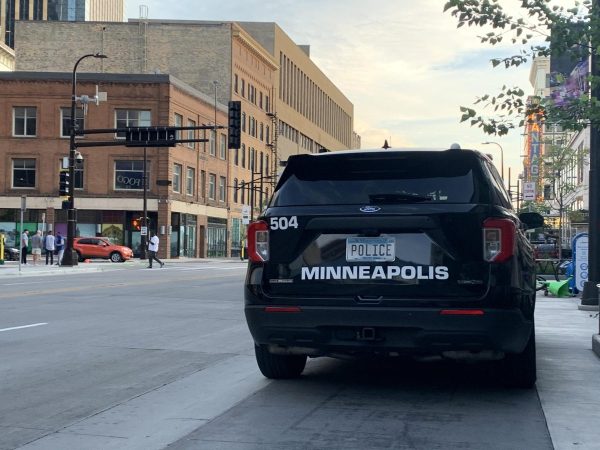Sexual violence prevention and advocacy organizations are honoring Sexual Assault Awareness Month at the campus, city and state levels.
Allison Pauna, a direct care provider for sexual violence survivors at the Sexual Violence Center in Minneapolis, said honoring Sexual Assault Awareness Month gets people to talk about sexual violence more and reduce its uncomfortable stigma.
“When we’re out in the community tabling, there will be a lot of people who kind of laugh and walk by,” Pauna said. “I know that’s out of being uncomfortable, but it’s important that we have these conversations and so that people know what it is.”
Sexual violence can include acts like revenge porn and grooming, Pauna added.
April was officially designated Sexual Assault Awareness Month in the U.S. in 2001, but sexual violence prevention activists were celebrating the month with events and programs decades before it was nationally recognized, according to the National Sexual Violence Resource Center.
Nicole Matthews, CEO of the Minnesota Indian Women’s Sexual Assault Coalition, said the coalition works as a supportive resource for other sexual assault advocates in the state, particularly those serving tribal communities.
“We can bring people together to reduce isolation, to support each other, to create a network where they can share resources, where they can be a sounding board for each other and they can learn from each other,” Matthews said. “That’s really critical.”
More than half of Native American women living in Minnesota experienced sexual violence in their lifetime, the highest rate of any racial group, the Women’s Foundation of Minnesota reported in 2024.
The coalition is hosting a conference for sexual violence advocates April 22 to 24 in Bloomington, Matthews said. The conference includes professional workshops, a pow-wow to honor sexual assault survivors and a self-care night for advocates to relax and support one another.
Sexual violence on campus
Advocates say that sexual violence on college campuses remains a present issue. More than 38% of all University of Minnesota female students reported experiencing sexual assault in their lifetime and about 15% of male students said the same, according to the University’s 2024 College Student Health Survey.
Chloe Vraney, the associate director for the University’s sexual violence center the Aurora Center, said academic advocacy services are the Aurora Center’s most-used resource by students.
“That is really monumental because we see how retention is impacted after violence happens,” Vraney said. “Students often drop out or people often leave their jobs because it’s really hard to continue showing up in the same way that you did before trauma happened.”
The Aurora Center’s academic advocacy resource is free, confidential and provides counseling for students struggling to focus or show up to class after a traumatic sexual experience, Vraney said. Aurora Center advocates can also help students get excused absences while they heal from a sexually violent experience.
Pauna said it’s important to not to ask “why” after a friend, roommate or loved one experiences sexual violence.
“As a support person, it’s not our job to try and investigate and find out specifically what happened,” Pauna said. “Our job is to support them and believe them and just be there for them and ask them what is the best way I can support you and that might change.”
Throughout April, the Sexual Violence Center is giving out teal lightbulbs for residences and lighting several buildings and bridges in Sexual Assault Awareness Month’s official color, Pauna said. The organization is also hosting a Take Back the Night event to conclude the month on April 30 at Boom Island Park in Minneapolis.
For students who know someone who has experienced sexual violence, Vraney said they should make a plan to follow up with a friend or roommate to check in after they’ve experienced sexual violence. The Aurora Center is hosting three events throughout April to honor Sexual Assault Awareness Month.
Deconstructing stigma
For almost every Native American woman who experienced one act of sexual violence in the U.S., their perpetrator was non-Native, the Women’s Foundation of Minnesota found. Most people who experience sexual violence experience it from someone in their same racial group, Matthews said.
Matthews said that, because tribal country legal jurisdiction does not usually extend beyond Native land, prosecution of non-Native perpetrators can be difficult. She added that a system that allows perpetrators a better chance to get away with sexual violence must be reexamined to prevent sexual violence against Native women.
“We have to look at you know the responses to our Native victims and what those responses have been,” Matthews said. “And do we have systems that encourage and support you know victims through that process because we know that many people don’t even report.”
Pauna said changing the stigma about sexual violence beyond its awareness month starts with understanding that it is never the survivor’s fault.
“It’s important people realize that if they do experience sexual violence, they did absolutely nothing wrong,” Pauna said. “It is not their fault, it is the person, the perpetrator, who did that, that is their fault.”














